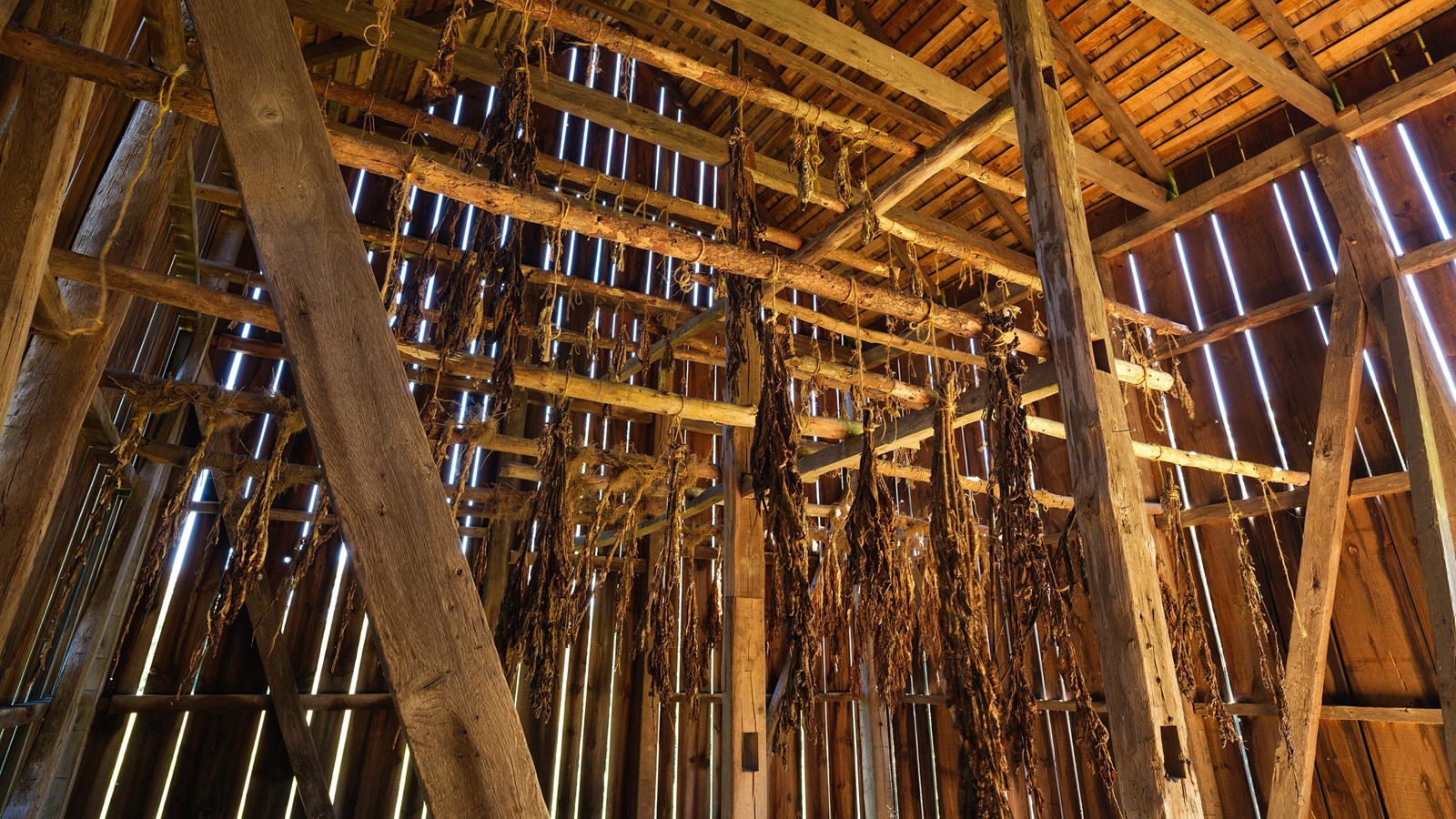Last updated: August 27, 2021
Place
The Tobacco Barn

NPS Photo/Stephen Girimont
Quick Facts
Location:
6655 Rose Hill Road Port Tobacco, MD 20677
Designation:
National Historic Site
From the 17th to the 19th centuries, Southern Maryland was one of the largest producers of tobacco in North America. Many of the tobacco barns used throughout the area still stand today, evidence of their importance to the area's economy. Most of these barns have been repurposed as houses and outbuildings.
Most tobacco barns, like the one at Thomas Stone National Historic Site, were large, wide sheds with sloped and shingled roofs. The sides were made of alternating rows of boards or logs that had open slits, allowing air to circulate through the building. A series of beams in the barn's ceiling allowed the tobacco plants to hang upside down from sticks to dry and to "cure" or preserve the tobacco.
Tobacco farmers in the Chesapeake region would have been forced to light fires in the tobacco barns for the curing process if it were a particularly rainy autumn. Though the heat of the flames assisted in the drying process, it could be dangerous. Thomas Jefferson once noted that "...great care is necessary as it [the tobacco] is very flammable, and it takes fire, the whole, with the house [tobacco barn], consumes as quickly as straw would."
The trick to curing in a tobacco barn was to produce a tobacco leaf neither too dry nor too moist. Excess moisture might cause the tobacco to rot during the shipment across the Atlantic. Leaves that were too dry became brittle and disintegrated before reaching Europe.
Tobacco barns stand today as a tangible reminder that while the crop could bring great wealth to its planters, it could also cause financial ruin if the crop did not survive its transport across the ocean.
Most tobacco barns, like the one at Thomas Stone National Historic Site, were large, wide sheds with sloped and shingled roofs. The sides were made of alternating rows of boards or logs that had open slits, allowing air to circulate through the building. A series of beams in the barn's ceiling allowed the tobacco plants to hang upside down from sticks to dry and to "cure" or preserve the tobacco.
Tobacco farmers in the Chesapeake region would have been forced to light fires in the tobacco barns for the curing process if it were a particularly rainy autumn. Though the heat of the flames assisted in the drying process, it could be dangerous. Thomas Jefferson once noted that "...great care is necessary as it [the tobacco] is very flammable, and it takes fire, the whole, with the house [tobacco barn], consumes as quickly as straw would."
The trick to curing in a tobacco barn was to produce a tobacco leaf neither too dry nor too moist. Excess moisture might cause the tobacco to rot during the shipment across the Atlantic. Leaves that were too dry became brittle and disintegrated before reaching Europe.
Tobacco barns stand today as a tangible reminder that while the crop could bring great wealth to its planters, it could also cause financial ruin if the crop did not survive its transport across the ocean.
